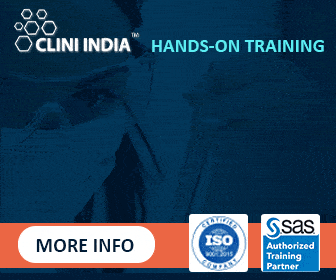MakroCare Medical Writing Job For BSc & MSc Life Sciences – Apply Online
MakroCare Medical Writing Job For BSc & MSc Life Sciences – Apply Online. Latest Medical Writing Job for UG/PG Life science Graduates at MakroCare – APPLY BELOW
Role : Medical Writer (CSR)
Company name : MakroCare
Job ID: 52709
Location : Hyderabad
Employment Type : Full time
Job description :
- Writing and reviewing clinical/regulatory documents such as clinical trial protocols, clinical study reports (CSR), investigator brochures, informed consent forms, and according to ICH or other guidelines.
- Module Drafting (2.4, 2.5. 2.6 & 2.7).
- Publication manuscripts, abstracts, posters (content writing) and presentations participate in post-market surveillance activities by conducting routine systematic literature reviews (e.g. Screening of articles against inclusion/exclusion criteria, extracting data from included studies,
- Interpreting study results and preparing summaries into formal reports) for specific medical device groups or subgroups.
- Develop templates for reports and other regulatory documents.
Education & Qualifications:
- Any UG/PG in Life Science background
- Minimum of 1-3 years of experience in the Medical Writing with in CSR field.
Skills required :
- Medical writing
- Module drafting
- Content writing
- Literature review
Here are some potential interview questions along with their sample answers for the Medical Writer-(CSR) role at MakroCare :
1. Can you describe your experience with medical writing and your familiarity with clinical/regulatory documents? Sample Answer: Certainly, I have a solid foundation in medical writing, particularly in the context of clinical and regulatory documents. I have successfully written and reviewed various documents, including clinical trial protocols, clinical study reports (CSRs), investigator brochures, and informed consent forms. I am well-versed in adhering to ICH guidelines and other relevant regulations to ensure the accuracy, clarity, and compliance of these documents.
2. Could you explain what Module Drafting (2.4, 2.5, 2.6, and 2.7) entails in the context of medical writing? Sample Answer: Module Drafting involves creating specific sections of regulatory documents, specifically sections 2.4, 2.5, 2.6, and 2.7 of a Common Technical Document (CTD) structure. These sections typically cover nonclinical summaries, clinical summaries, clinical overview, and nonclinical overview, respectively. In these sections, I gather and present essential data, analyze study results, and provide concise yet comprehensive information about the medical product’s safety, efficacy, and quality.
3. How do you approach the task of content writing for publication manuscripts, abstracts, and posters? Sample Answer: When it comes to content writing for publications, abstracts, and posters, I adopt a strategic approach. I ensure that the content is clear, concise, and targeted to the intended audience. I focus on highlighting key findings, methodologies, and implications of the study. Additionally, I pay attention to formatting and visual elements to effectively convey complex information. My goal is to create engaging and informative content that effectively communicates the research outcomes.
4. Can you describe your experience with conducting systematic literature reviews? Sample Answer: I have hands-on experience conducting systematic literature reviews as part of post-market surveillance activities. I follow a rigorous process, including screening articles against predefined inclusion and exclusion criteria, extracting relevant data from selected studies, and interpreting the results to prepare comprehensive summaries and formal reports. This approach ensures that I provide accurate and up-to-date information about specific medical device groups or subgroups.
5. How do you ensure consistency and adherence to regulatory standards when developing templates for reports and regulatory documents? Sample Answer: Developing templates for reports and regulatory documents requires a keen understanding of regulatory guidelines and the specific document requirements. I ensure consistency by aligning the templates with established standards such as ICH guidelines. I pay attention to formatting, structure, and content elements to make sure that the templates are comprehensive, clear, and easy to use. Regular updates based on regulatory changes further ensure that the templates remain compliant and effective.
6. Could you provide an example of a challenging situation you faced while working on a clinical study report (CSR) and how you managed it? Sample Answer: In a particular CSR project, I encountered challenges related to reconciling conflicting data interpretations from different study investigators. To address this, I initiated a collaborative discussion among the investigators to clarify their perspectives and reach a consensus. I also conducted additional research to validate the findings and provided a comprehensive analysis that highlighted both the discrepancies and the reasons behind them. This approach helped in presenting an accurate and balanced assessment in the CSR.
ALL THE BEST!
Editor’s Note: Please ensure you are subscribed to the Biotecnika Times Newsletter and our YouTube channel to be notified of the latest industry news. Follow us on social media like Twitter, Telegram, Facebook





































